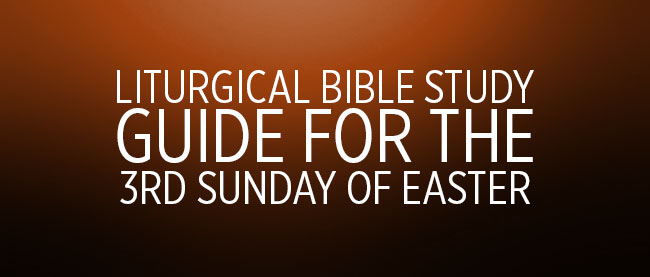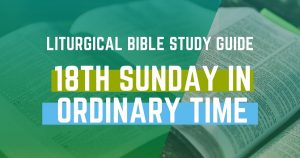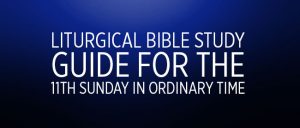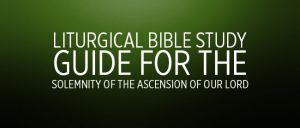1st Reading – Acts 2:14, 22-33
Today’s first reading tells of the formation of the early Church as we hear Peter address the people of the day of Pentecost. His address is in two parts: Part 1, which we do not hear today, explains that the messianic times foretold by the Prophet Joel have now arrived; today’s reading is the second part of the address and it proclaims that Jesus of Nazareth, whom the Jews crucified, is the Messiah promised by God and eagerly awaited by the righteous of the Old Testament; it is he who has effected God’s saving plan for mankind.
“Pentecost” means “the 50th day”. It is one of three feasts mentioned in Exodus 23:14-17 where it is called simply the harvest festival, the feast of the first-fruits of the grain harvest. In Leviticus 23:15-21 the feast is reckoned by counting seven weeks from the beginning of the grain harvest; it is a day of sabbatical observance. As with the other two feasts mentioned in Exodus 23:14-17, it is a pilgrimage feast: “three times in the year shall all your males appear before the Lord God”. Jerusalem is crowded with pilgrims. The resurrected Jesus had spent forty days instructing His apostles and then ten days ago ascended after telling them “not to depart from Jerusalem, but to wait for ‘the promise of the Father… you will be baptized with the Holy Spirit’” (Acts 1:4-5). The Holy Spirit has come upon them this day and now Peter, the chief apostle and spokesman for the group, addresses the crowd of pilgrims who are outside the upper room, attracted by the sound of the coming of the Spirit.
2nd Reading – 1 Peter 1:17-21
This week we delve a little farther into the 1st letter of Peter. Peter was originally called Simeon in Hebrew (Simon is the Greek form of the name). Jesus reamed him Kepha (Hebrew/Aramaic) or Petros (Greek), transliterated in some texts as Cephas. Simon Peter was a native of Bethsaida, a city of Galilee on the northeast shore of Lake Tiberius (Genesareth/Sea of Galilee). Like his father John and his brother Andrew, he was a fisherman. We know that he was married because Jesus healed his mother-in-law who was living in Capernaum (Matthew 8:14).
Today we hear Saint Peter call us to holiness. The Christian has attained the honor of being God’s child, his son or daughter. Peter summarizes God’s plan for man’s salvation, which comes about in Christ: from all eternity it was God’s design to save men through Christ; this design was made manifest “at the end of times”; when our Lord offered Himself as an expiation for the sins of men, and then rose from the dead and was glorified.
Gospel – Luke 24:13-35
Last week we heard the account of Jesus’ first appearance to the disciples as recorded in the Gospel of John. It was at this appearance that He conferred the ability and responsibility to forgive sins to the apostles. Today’s gospel reading is the first appearance of Jesus away from the tomb as recorded in Luke’s gospel. There is a parallel account in Mark 16:12-13.
There are a number of differences which show up upon comparison of today’s gospel reading with the gospel reading of last week as we hear this week of the account of His appearance to the two disciples on the road to Emmaus:
1) The two men are not leaders of the community but represent all followers.
2) The two men are troubled and do not understand why Jesus was crucified.
3) At first they do not recognize Jesus.
4) The apostles seem to recognize Jesus but do not believe their senses.
5) After recognition, these two men do not hesitate to believe.
6) Once recognized, Jesus disappears.





